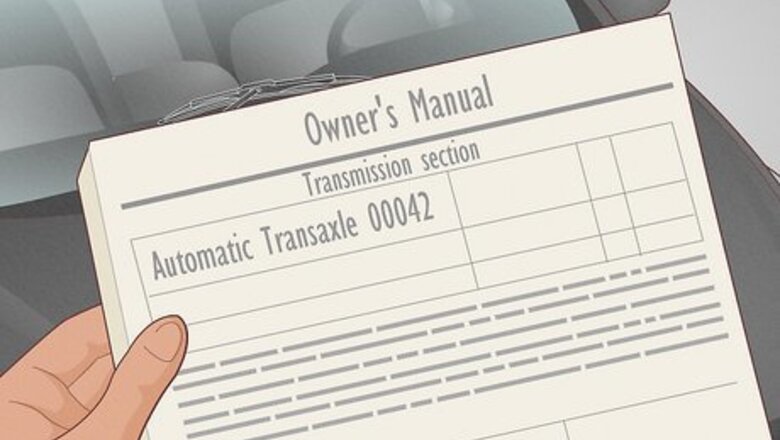
views
- Look up information on your vehicle’s make, model, and year in the owner’s manual (or online) to get details on the transmission.
- Use the NHTSA’s online VIN decoder to get a transmission report based on the Vehicle Identification Number.
- Check for a code on the transmission and compare its shape to online diagrams to get detailed “specs” for repairs or replacement.
- Have a pro take a look if you have leaking transmission fluid, gearshift issues, lurching, or other signs of transmission trouble.
Looking Up Transmission Info
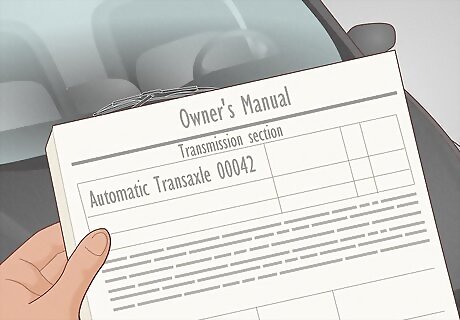
Consult the transmission section of your owner’s manual. The amount of detail you’ll get depends on the make, model, and year, but you should find at least some basic information about the vehicle’s transmission. For instance, the 2020 Subaru Ascent manual states only that it uses a Continuously Variable Transmission (CVT) that utilizes a “chain type system.” Meanwhile, the 2007 Chevrolet Malibu manual lists the transmission as either an “Automatic Transaxle 4T45-E” or “4T65-E.”

Enter the VIN into the NHTSA’s online VIN decoder. Go to https://vpic.nhtsa.dot.gov/decoder/ and type in the VIN (the 17-character Vehicle Identification Number). Look under the “Engine” category of the resulting report to find information on the vehicle’s transmission. Depending on your vehicle type, you may get only basic transmission information (like manual or automatic), or you may get greater detail on the particular type of transmission. Where’s your vehicle’s VIN? Start by looking for the VIN at the top left corner of the dashboard (above and to the left of the steering wheel), near where it meets the bottom of the front windshield. Or check the following: Look for the VIN on the driver-side door frame, under the spare tire, in the rear wheel well, or on the front of the engine block. Check your vehicle insurance card, vehicle title, or vehicle registration—these almost always include the VIN. Consult your most recent vehicle service report. Most automotive garages include the VIN on the vehicle write-up. Dig out your vehicle purchase paperwork, or contact the dealership. NOTE: There are alternative VIN decoder sites to the NHTSA one, but you’ll get (at best) the same information from those.

Search online by vehicle make, model, and year. If you search online for “2007 Chevrolet Malibu transmission,” for example, you’ll get lots of results for transmission sale and/or repair sites. Do a little digging here, and you’ll find (for instance) the “4T45-E” transmission listed in the 2007 Malibu owner’s manual. You may be able to narrow down your search by heading to the vehicle manufacturer’s website and using its search bar. However, the manufacturer may only provide specs for its most recent models.
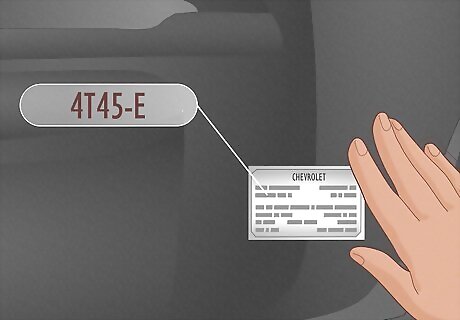
Check the placard on the driver’s side door. This placard, which is visible along the lower part of the door when you have it open, is the same spot that contains the VIN and other vehicle info (such as the recommended tire pressure). The newer the vehicle, the more info that tends to be included on the placard—so your vehicle may or may not include details on the transmission in this spot. It’s possible but not guaranteed, for example, that the placard will tell you whether your 2007 Malibu has a 4T45-E or a 4T65-E transmission.
Visually Identifying the Transmission
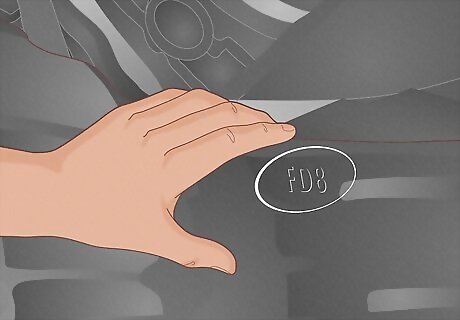
Look for a stamped code on the transmission case. Especially on modern vehicles, the transmission often has a code that’s either stamped onto the case or attached to the case by a metal tag. So pop the hood and take a look—if you find a code on the transmission, search online (“transmission [code]”) to get more specific information. Use the engine compartment diagram in your owner’s manual to help you locate the transmission under the hood. In many front wheel drive vehicles, it’s located in front of and slightly below the engine, roughly level with the oil pan. Sometimes you’ll have to look from the underside of the vehicle in order to spot the code on the transmission. If so, jack up the vehicle safely and securely before slipping underneath with a flashlight to take a look.

Take a picture of the transmission and check it online. While looking (from above or below) for a code on the transmission case, snap a few photos of the transmission. Search online for transmissions for your make, model, and year of vehicle, then compare the images or diagrams you find to your photos. The shape of the case, markings on the case, and number and locations of the bolts on the case can help reveal the specs of the transmission and its time and place of manufacture.
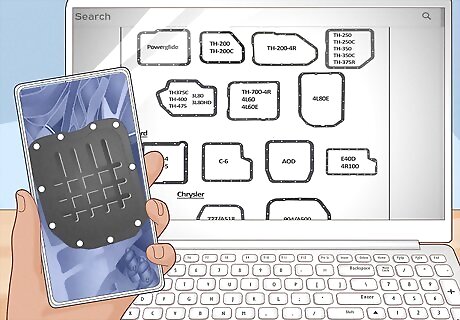
Compare the transmission pan to online diagrams. The transmission pan is connected to the underside of the transmission and prevents transmission fluid from leaking. Transmission pans come in a wide variety of shapes, so sketch out a diagram of the pan shape and bolt placements from underneath the vehicle. Search online for “transmission pan identification chart” (or similar search terms) to compare the shape to diagrams provided online. This pan info often reveals the specs of the transmission itself.
Transmission Types
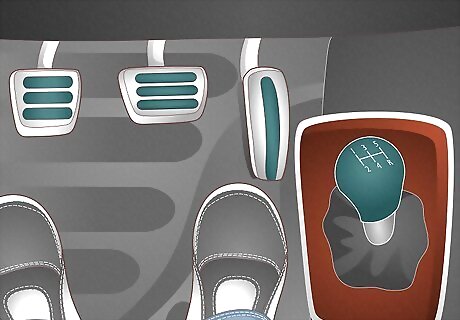
Manual If your vehicle has a clutch pedal (typically to the left of the brake pedal) and a shifting stick with a range of gears (often 4-6), it has a manual transmission. As the name indicates, it’s up to the driver to change gears while driving by using the clutch and stick. While driving a manual transmission vehicle requires much more active management on your part, it gives you greater engine control and efficiency in return. Less than 10% of new vehicles sold today have a manual transmission.
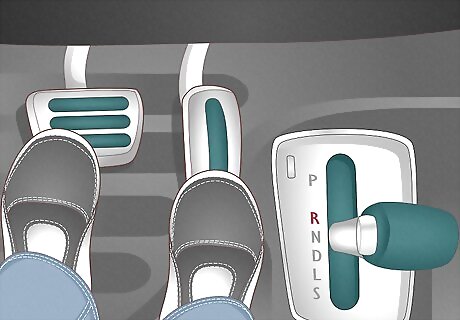
Automatic Instead of relying on the driver to manually change gears while driving, an automatic vehicle has a torque converter inside the transmission that changes gears without the driver’s assistance. If there’s no clutch pedal and only a simple stick shifter (with gears like D [drive], P [park], and R [reverse]), you know you’re driving an automatic transmission vehicle. It’s easier to drive an automatic, but you do sacrifice some amount of control, performance, and efficiency.
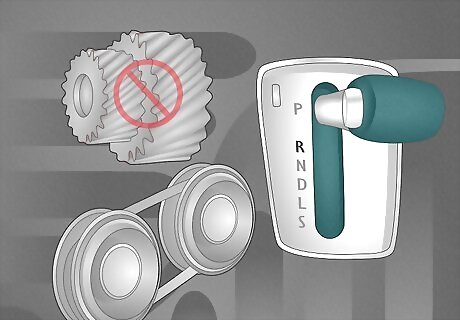
CVT While a vehicle with a Continuously Variable Transmission looks and operates like an automatic, it’s technically an entirely different kind of transmission. Instead of using traditional gears like an automatic (or manual, for that matter), a CVT is “gearless,” relying instead on a set of pulleys. You can’t visually tell the difference between a CVT and an automatic, but a CVT does provide a different feel while driving—what many drivers consider to be a smoother ride. Because they offer greater fuel efficiency, CVTs are becoming increasingly common. Subaru, for instance, uses CVT across its entire line of vehicles.
How can I tell if I have transmission issues?
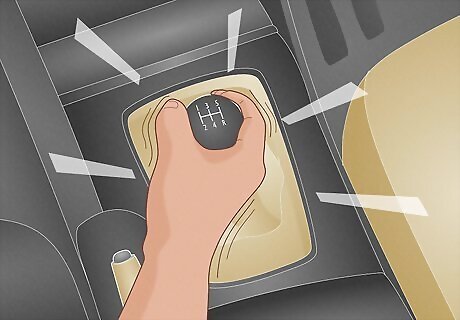
Watch out for gearshift troubles, lurching, or puddling fluid. When in doubt, get your transmission checked out! Why? Because the transmission is one of the most complex (and most essential) systems in your vehicle, so the proper diagnosis and repair of any problems are best left to a professional. Signs of transmission trouble often include: Difficulty shifting gears Slipping out of gear, especially under load (such as driving uphill) Puddling of reddish-brown, oil-like transmission fluid under the vehicle Lurching when the vehicle moves from a stopped position


















Comments
0 comment